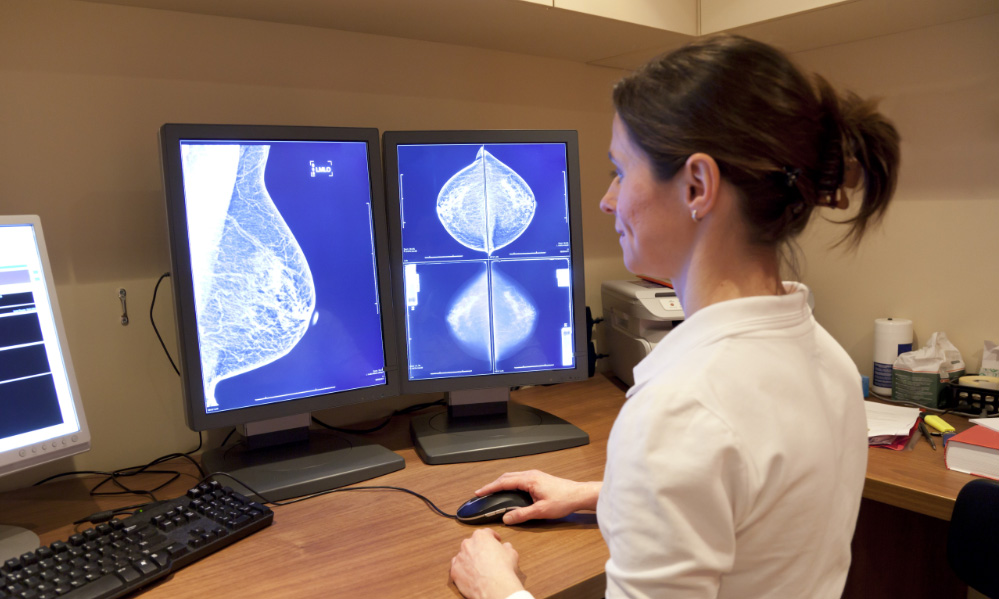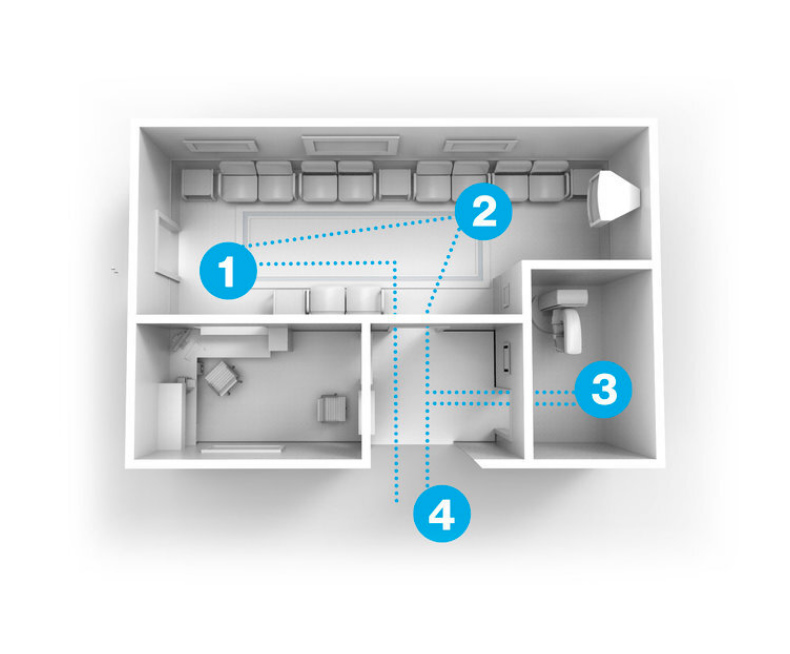How to Instantly Improve Mammography Quality in your Clinic
Oct 10, 2019Categories: General, Mammography Image Quality
Breast cancer screening is widely accepted as the best strategy for early detection and effective treatment.
A growing body of research shows image quality errors are associated with suboptimal care for women, including unfavorable outcomes like late cancer detection (false negatives) and overtreatment (false positives).
Mammography sensitivity drops from 84.4% to 66.3% due to failure to achieve positioning criteria alone.
It’s a mistake to underestimate the importance of proper positioning given only those areas of the breast that appear in the mammogram can be evaluated for cancer and risk factors. Inadequate separation of overlapping breast tissue caused by improper compression pressure may also contribute to suboptimal outcomes, which can mask cancer in one image, masquerade as it in another.
Add to that the research that shows random audits of image quality at mammography facilities demonstrate up to 50% of audited images would fail accreditation, it’s no wonder recognition of the importance of mammography quality in breast screening is on the rise.

These numbers also demonstrate the inadequacy of reliance on sampling to perform routine image quality checks. Every woman deserves to have her mammogram evaluated for quality to optimize her care.
That said, women’s health is not the only driver behind the growing attention that is being paid to image quality in research and practice.
Improved mammography quality also benefits workflow efficiency, resulting in reduced costs at the clinic and hospital system levels. That’s partly because improved image quality leads to fewer technical recalls.
About 1 in 20 women return to retake their mammograms due to technical quality reasons. It’s broadly recognized that these technical recalls increase operating costs since they require a second exam that are ineligible for reimbursement.
Improper compression pressure can also contribute to poor patient experience. Studies show that the pain women experience when pressure is too high can discourage them from returning for mammography due to fears of another painful compression.

The growing compliance burden faced by breast screening is also driving increased attention on mammography image quality.
The FDA’s EQUIP inspection program which launched in 2017 reflects this. It requires facilities to establish and maintain processes for identifying and correcting image quality errors. We’ve heard from healthcare providers that launching effective systems for reviewing, documenting and actioning insights from image quality data—activities that are required to satisfy the new EQUIP program—requires resources and know-how that they just don’t have.

What can you do to Improve Mammography Quality at your Organization?
You can instantly improve mammography quality at your organization by incorporating an automated image quality assessment solution into your mammography quality program.
Next generation solutions are designed with value-based care in mind and offer important benefits like:
-
Standardized image quality evaluation for each and every mammogram
-
On-demand A.I.-powered health system-wide quality analytics for benchmarking and trend detection
-
Image quality assessment at the point of image acquisition to optimize workflow and patient care
Standardized Image Quality Evaluation for Every Mammogram
 We mentioned earlier that every woman deserves to have the quality of her mammogram assessed. But with visual image quality assessment of critical measures of image quality—portion cut-off, skin folds, inadequate IMF and compression pressure, to name a few—taking an average of 10 minutes per study, visual evaluation of every woman’s mammogram is simply not practical, even in low volume clinics.
We mentioned earlier that every woman deserves to have the quality of her mammogram assessed. But with visual image quality assessment of critical measures of image quality—portion cut-off, skin folds, inadequate IMF and compression pressure, to name a few—taking an average of 10 minutes per study, visual evaluation of every woman’s mammogram is simply not practical, even in low volume clinics.
Compounding the problem is the variability in individual physician and technologist visual perceptions. Each person may interpret the criteria for acceptable image quality differently, which also contributes to poor image quality.
By contrast, a modern automated solution can accomplish the same assessment of image quality in seconds. This feature enables continuous and comprehensive quality assurance on every mammogram taken across a clinic or entire health system.
Automated solutions also minimize the problem of variability inherent in judging image quality by standardizing the assessment. This means that the image evaluation is performed by the software automatically on the basis of a uniform and consistent read of image quality measures no matter how many times the algorithm is rerun over the same image, unlike with human readers.
Standardization of image quality assessment is also important because it lays the groundwork for establishing image quality benchmarks across individual breast screening units or an entire health system.

On-demand Analytics for Value-based Care
Health system-wide analytics are necessary for delivery of value-based care. Without standardized A.I.-powered image quality evaluation, the objective basis against which quality can be assessed is put out of reach. This underscores the core problem of visual assessment, which is the high degree of variability in the perception of image quality using visual evaluation methods.
But the capacity to benchmark is critical to health system administrators as it helps them access important insights into quality performance that allow meaningful action to be taken to improve service delivery and patient health under value-based care.
Benchmarking within mammography quality includes producing baseline performance data against key quality measures like positioning and compression pressure. With an automated solution that integrates with PACS, an entire hospital system’s cache of priors can be conveniently evaluated to facilitate benchmarking.
And with those same solutions putting comprehensive and reliable image quality data at the fingertips of health system administrators like positioning error rates, key performance indicators can be monitored on demand to generate a complete picture of workflow performance.
 Image Quality Assessment at Point-of-Care for Clinical Workflow Efficiency and Better Patient Experience
Image Quality Assessment at Point-of-Care for Clinical Workflow Efficiency and Better Patient Experience
To have a meaningful impact on clinic and clinical workflow efficiency, image quality feedback in real time at the point of image acquisition is fundamental. This feature enables the technologist to recognize avoidable image quality errors and retake the mammogram before the mammogram is routed to PACS and the patient leaves the exam room.
This reduces the breast screening program’s administrative burden by minimizing the need to reschedule exams due to technical recalls and allows the radiologist to avoid the distraction of poor image quality and keep their focus on higher value tasks like screening the study for signs of cancer.

The consequences of reviewing an image with poor quality may range from a technical recall to over or undertreatment due to a positioning or compression pressure error. Unnecessary supplemental screening resulting in suboptimal equipment utilization is also a known outcome, reducing workflow efficiency.
Training and Continuing Education
Inadequate training and feedback mechanisms have been identified by FDA as principal causes of poor image quality. To improve performance, technologists require awareness of their deficiencies.
An automated image quality assessment solution that standardizes image quality measures and automatically screens for errors at point-of-care can be conveniently incorporated into facility training programs to provide technologists with continuous feedback about their performance so errors can be addressed immediately. This helps to reduce rates of poor image quality and eases communication between interpreting physicians and technologists about quality issues.
Discover densitas® qualityai™

Want to learn more about how Densitas can help your facility optimize mammography with improved image quality? Request a demo of densitas qualityai™—our A.I.-powered image quality solution for breast health.
Let’s Stay Connected, Subscribe for Updates
Join our email list to stay up to date on the latest advancements in breast health technology.
 Canada
Canada USA
USA UK
UK